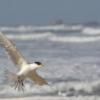-
Posts
9,488 -
Joined
-
Last visited
Content Type
Profiles
Forums
Gallery
Events
Everything posted by Jim Lad
-
All those windows - you must have nerves of steel, Andy! John
- 382 replies
-
- stadacona
- sylvan scale models
-
(and 1 more)
Tagged with:
-
Ollie, First planking done is a real milestone. Don't be in a rush to start the second planking - take your time to run your hands over the hull and look at it carefully from all directions to make sure that it's really smooth and even. Any short cuts at this stage will show up in the final job. As others have said, cut the hole for the rudder head before you start the second planking. If the model will be in a case it doesn't matter whether or not it moves, but I like mine to be moveable. John
- 803 replies
-
- colonial cutter
- modellers shipyard
-
(and 1 more)
Tagged with:
-

SS Vinal Haven by TBlack - FINISHED
Jim Lad replied to TBlack's topic in - Build logs for subjects built 1851 - 1900
Sounds good to me, Tom! John- 326 replies
-
- vinal haven
- steam ship
-
(and 1 more)
Tagged with:
-
That's what I was wondering, Andy. John
- 382 replies
-
- stadacona
- sylvan scale models
-
(and 1 more)
Tagged with:
-

SS Vinal Haven by TBlack - FINISHED
Jim Lad replied to TBlack's topic in - Build logs for subjects built 1851 - 1900
Tom, Your funnel has turned out really well. Don't overthink your escape valve - that ferry was built in the age of "we'll make as much noise as we damn well please". Many early steamers simply had an open pipe venting to the atmosphere, or a crude spring valve at the top of the pipe. As for your eagle, I did a quick image search on 'Preiser HO Gauge Bird Figures' and turned up several possibilities. John- 326 replies
-
- vinal haven
- steam ship
-
(and 1 more)
Tagged with:
-
Just catching up after being away for a couple of days, Mobbsie. She's looking fine, mate! John
- 1,279 replies
-
- agamemnon
- caldercraft
-
(and 1 more)
Tagged with:
-
Been away for a couple of days - you've certainly made excellent progress! John
- 113 replies
-
- bohuslän
- nordic class boats
-
(and 1 more)
Tagged with:
-
Nice progress, Andy - she's really coming on. By the way, you mentioned officers quarters forward and galley aft (been away for a couple of days so catching up) - did the officers have to tramp aft for their meals or did the steward have to cart it all the way up forward? John
- 382 replies
-
- stadacona
- sylvan scale models
-
(and 1 more)
Tagged with:
-

Margin plank
Jim Lad replied to Nacioffi's topic in Building, Framing, Planking and plating a ships hull and deck
Nick, Have a look at this thread:- http://modelshipworld.com/index.php?/topic/4058-how-to-do-deck-edging/ John -
Piet, If you were a sheet metal worker, then this will be a piece of cake for you! John
-
You're making excellent progress, Puckotred! John
- 113 replies
-
- bohuslän
- nordic class boats
-
(and 1 more)
Tagged with:
-
Interesting discussion. Harold Underhill pre-bevelled his frames, and recommends it in his book 'Plank on Frame Models'. John
- 3,618 replies
-
- young america
- clipper
-
(and 1 more)
Tagged with:
-
Keep it coming, Michael. I can't get enough of your beautiful work! John
- 2,214 replies
About us
Modelshipworld - Advancing Ship Modeling through Research
SSL Secured
Your security is important for us so this Website is SSL-Secured
NRG Mailing Address
Nautical Research Guild
237 South Lincoln Street
Westmont IL, 60559-1917
Model Ship World ® and the MSW logo are Registered Trademarks, and belong to the Nautical Research Guild (United States Patent and Trademark Office: No. 6,929,264 & No. 6,929,274, registered Dec. 20, 2022)
Helpful Links
About the NRG
If you enjoy building ship models that are historically accurate as well as beautiful, then The Nautical Research Guild (NRG) is just right for you.
The Guild is a non-profit educational organization whose mission is to “Advance Ship Modeling Through Research”. We provide support to our members in their efforts to raise the quality of their model ships.
The Nautical Research Guild has published our world-renowned quarterly magazine, The Nautical Research Journal, since 1955. The pages of the Journal are full of articles by accomplished ship modelers who show you how they create those exquisite details on their models, and by maritime historians who show you the correct details to build. The Journal is available in both print and digital editions. Go to the NRG web site (www.thenrg.org) to download a complimentary digital copy of the Journal. The NRG also publishes plan sets, books and compilations of back issues of the Journal and the former Ships in Scale and Model Ship Builder magazines.


